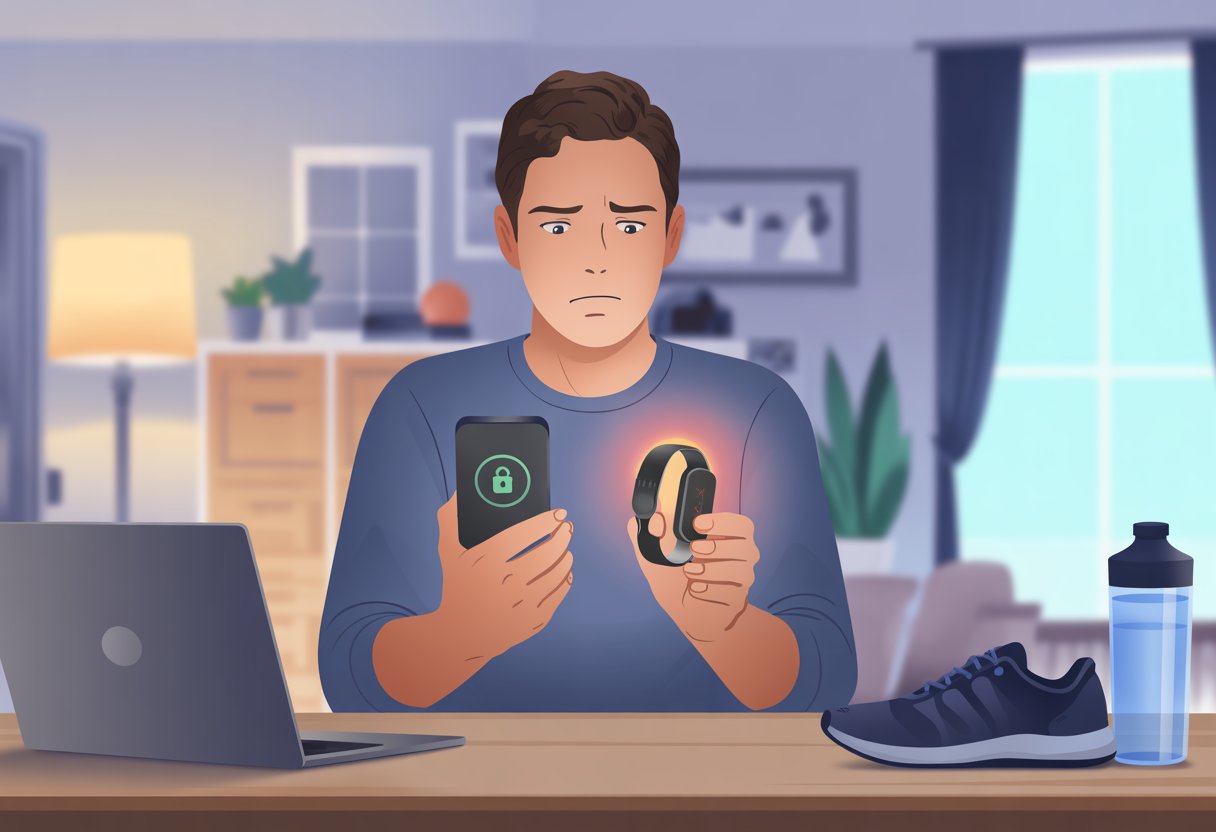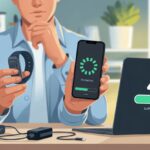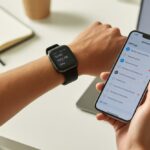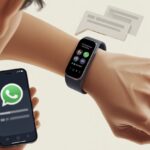Let’s be real—fitness trackers are supposed to make us feel like tech-savvy superheroes. Instead, they sometimes leave us awkwardly waving our wrists at our phones, hoping for a miracle. When our trusty trackers suddenly ignore our phones like a grumpy cat, it’s only natural to feel confused.
Usually, a fitness tracker won’t unlock a phone when Bluetooth is off, when either device needs a restart, or when the pairing’s gone sideways. Sometimes it’s just a missed app update—or maybe our gadgets are just feeling moody.

We’ve all had a simple task turn into an unexpected workout. If you’re wondering why your wearable suddenly stopped letting you skip your phone’s lock screen, you’re not alone.
Let’s dig into what’s really happening when our fitness trackers refuse to cooperate, and how we can get those digital doors open again—ideally without breaking a sweat.
Understanding Fitness Tracker Phone Unlock Features
We expect our fitness trackers to play nice with our smartphones, especially when we’re juggling groceries or jogging. But, honestly, it’s not always that smooth.
Let’s look at why this magic handshake sometimes flops, and which devices even support it in the first place.
How Unlocking With Fitness Trackers Works
Fitness trackers and smartwatches—think Apple Watch—often let us unlock our phones without Face ID, Touch ID, or a passcode. It’s like a secret handshake for our phone, but sometimes the phone just acts like it’s never met us.
This all happens over Bluetooth. The tracker or watch needs to be close by, or the connection drops. Security matters here.
Most systems only unlock if our face still matches (even if we look tired post-workout), or if a trusted device is nearby. On iOS, for example, Apple Watch can unlock our phone when Face ID is blocked—like when we’re wearing a mask.
If our phone or tracker has a low battery, is in airplane mode, or is behind on updates, things can go sideways fast. Sometimes, the unlock feature just refuses to work, and we end up tapping the screen in frustration.
Compatible Devices and Operating Systems
Compatibility causes all sorts of headaches. Not every fitness tracker gets along with every phone.
For example, unlocking an iPhone with Apple Watch only works if you have iOS 14.5 or later, the right passcode setup, and the watch running watchOS 7.4 or higher.
Other trackers, like Fitbit or Wear OS models, usually unlock some Android phones and rarely iPhones. Both the phone and tracker need to support this feature—otherwise, your phone just sulks and won’t let you in.
We need Bluetooth (and sometimes Wi-Fi) switched on. Devices must be logged into the same account, paired with the right app, and running up-to-date software. If any of these steps slip, the unlock option vanishes—or worse, the tracker buzzes with an error and nothing happens.
Here’s a quick table showing who plays nice with whom:
| Tracker | Works with | Extra Requirements |
|---|---|---|
| Apple Watch | iPhone (iOS 14.5+) | watchOS 7.4+, Bluetooth, Wi-Fi |
| Fitbit Sense | Some Android phones | Fitbit app, Bluetooth, stays close |
| Wear OS Devices | Android phones | Wear OS app, Bluetooth, same account |
If your gear isn’t on this list or the software’s out of date, you’re stuck with good old fingerprints or PINs.
Common Causes for Fitness Tracker Not Unlocking Phone
Fitness trackers aren’t magic wands. Sometimes, a little glitch in our settings or tech blocks the smooth unlocking we want.
Let’s shine a light on the main reasons we end up fumbling for passwords instead of breezing through with a flick of the wrist.
Bluetooth Connection Issues
Bluetooth is the invisible handshake between devices, but sometimes it just won’t cooperate. When our tracker fails to unlock the phone, the usual culprit is a weak or broken Bluetooth connection.
If Bluetooth is off on either device, they can’t even try to talk. Too many Bluetooth gadgets nearby can confuse things, making our phone ignore the tracker completely.
Sometimes we think Bluetooth is on, but the “off” switch had other ideas. It’s worth double-checking that Bluetooth’s actually enabled, removing any extra devices, and toggling Bluetooth off and on for a quick reset.
Outdated Software or Firmware
Using out-of-date software feels like living in the past. Our fitness tracker and phone act the same way when they’re running old versions of their software or firmware.
When just one device is out of sync, unlocking won’t work. Most problems vanish after updates, though. Check for updates in the Bluetooth settings or in the tracker’s app.
For Apple users, outdated watchOS or iOS causes extra headaches. Honestly, keeping everything updated is like brushing our teeth—but for electronics.
Incorrect Settings and Permissions
Settings love to hide in plain sight, just waiting to trip us up. If we don’t give permission, the phone won’t unlock—no matter how hard our tracker tries.
This includes privacy settings, security permissions, and even fitness tracking toggles. Some phones need us to activate “Bluetooth Unlock” or “Unlock with phone.” If we skip these, the feature won’t work.
For some trackers, like Mi Band, the unlock feature might be missing or hidden, as users have noticed in the Mi Fitness app and Bluetooth Unlock menu.
It’s worth scrolling through the settings and making sure the right permissions are on. Trackers want to help, but only if we let them.
Troubleshooting Bluetooth and Connection Problems
Getting a fitness tracker to unlock a phone can feel like solving a puzzle with missing pieces. Let’s walk through the basics to fix common Bluetooth gremlins, keep our batteries happy, and make syncing less mysterious.
Restarting Devices and Re-enabling Bluetooth
Let’s start with the classic fix—have we tried turning it off and back on? Restart both the phone and the tracker.
Sometimes electronics just need a nap. Next, toggle Bluetooth off, count to ten (or five, if we’re impatient), then turn it back on.
This often clears minor glitches faster than we’d expect. Make sure Bluetooth is really on and not just pretending.
Sometimes separating the gadgets helps. Turn off Bluetooth, restart both devices, and then switch Bluetooth back on. This lets everything reset and gives the tracker and phone a fresh start.
Pairing and Syncing Steps
Now for the main event—pairing. Most trackers need us to put them in pairing mode. That might mean pressing a button or swiping through some menus.
Once it’s ready, our phone should spot it. On the phone’s Bluetooth list, tap the tracker’s name.
If it asks for a code, enter it. If the tracker won’t show up, remove it from the Bluetooth list and try again.
If it feels like déjà vu, you’re not alone—this happens to a lot of us. For syncing, open the fitness app and hit “sync” or “connect.”
If it fails, try again. Sometimes the app needs an update, so a quick trip to the App Store can help.
Following community pairing and syncing tips can clear up stubborn issues.
Battery and Low Power Mode Considerations
Low batteries cause more drama than a group chat argument. If the phone or tracker is nearly dead, it might refuse to unlock or connect.
Charge both devices first. Double-check if either device has Low Power Mode on.
This feature sometimes disables Bluetooth to save energy, which ruins our unlocking plans. Turning off Low Power Mode usually brings Bluetooth back to life.
If things still won’t work, give both devices a proper charge and a quick reboot. Keeping both fully charged is the not-so-secret sauce for reliable unlocking.
Software Glitches and App Issues
Sometimes our fitness tracker and phone just aren’t getting along, and no amount of wrist flailing helps. Let’s look at the usual suspects—app bugs, outdated software, and those mysterious system errors that test our patience.
Fixing Fitness App Not Working
When our fitness app isn’t talking to the tracker, it gets frustrating fast.
First, make sure Fitness Tracking is actually on. Head to Settings > Privacy & Security > Motion & Fitness and check the toggles.
It’s easier to miss this than you’d think. If you’re still staring at a blank activity ring, try restarting both the tracker and phone.
Connection problems between Apple Watch and iPhone happen more often than we’d like, especially after updates. If the app’s still stuck, these fixes for the Fitness app not working can walk you through some common solutions.
Reinstalling or Updating Fitness Apps
Sometimes the app just gets, well, tired. If nothing’s working, try deleting and reinstalling the fitness app.
This can clear out hidden bugs that stick around after updates, like stubborn glitter after a party. Long-press the app, hit Delete, then reinstall it from the App Store.
It’s also smart to check for updates to both the app and your phone’s operating system. Outdated versions can cause sync failures, missed notifications, and missing data.
Let’s be honest, we’re all guilty of hitting “Remind Me Later” too often. Keeping everything updated helps. If you want a step-by-step guide, check these tips for reinstalling or updating fitness apps in the Apple Community.
Addressing System Errors and System Repair
App glitches aren’t always the culprit. Sometimes, sneaky iOS system errors make our fitness tracker ghost us. Failed updates, corrupted files, or bugs from unsupported beta versions can cut off communication between our phone and tracker.
When things get desperate, we can grab a system repair tool like TunesKit iOS System Recovery or similar iOS recovery apps. These usually fix deeper issues without erasing our data.
Most of these tools work with just a few clicks, so we don’t have to do a full reset. If our phone keeps acting up, it might be time to chat with Apple Support—or maybe just glare at it until it behaves.
Apple Watch and iOS Unlock Troubles
Ever find yourself staring at your locked phone while your Apple Watch just sits there, pretending it doesn’t know you? Let’s dig into why that happens and what we can try.
Unpairing and Resetting Apple Watch
Sometimes, our trusty Apple Watch just forgets it’s supposed to be best friends with our iPhone. This is usually a minor hiccup, and unpairing then pairing again can sort things out.
When we unpair the watch, it disconnects and erases most of its data. Thankfully, the iPhone saves a backup for us.
To unpair, open the Watch app, tap “All Watches,” pick the stubborn device, and hit “Unpair Apple Watch.” After that, just pair it again.
This fix has helped a lot of people, especially when “Unlock with Apple Watch” stops working—at least, that’s what Apple and a bunch of users on their support forums say. Just a heads up: the unlocking option might switch off during all this, so remember to turn it back on.
Fitness Calibration Data and Health App
Let’s talk calibration data for a sec. Our Apple Watch relies on this to track steps and workouts, but sometimes old or weird calibration data messes up the connection between watch and phone.
If we jog in a way that confuses the watch, it might refuse to unlock our phone until we reset things.
We can reset this by heading to Privacy > Reset Fitness Calibration Data in the Watch app. This won’t mess up our health stats, but it does give the devices a fresh start.
The Health app will still keep our info, just without the calibration quirks.
Factory Resetting Your iPhone
If the Apple Watch still won’t play nice, we might need to bring out the big guns: factory resetting the iPhone. Honestly, it’s the digital version of “turn it off and on again,” but way more nerve-wracking.
A factory reset wipes almost everything, including that wallpaper of our cat’s weirdest face. We should back up to iCloud or a computer before doing this, unless we’re okay with losing years of fitness calibration data, Health app records, and all those lunch screenshots.
Only try this if nothing else works—nobody wants to risk unnecessary data loss.
Third-Party Fitness Trackers: Garmin and Beyond
Not every fitness tracker gets along with our smartphones, especially when it comes to unlocking them. Garmin has its own system, while other brands struggle with compatibility.
Garmin Connect App Setup
Setting up the Garmin Connect app should be simple—like slipping on sneakers. But sometimes, it feels more like tying shoelaces with mittens.
We need to check that Bluetooth is on for both the Garmin device and the phone. Restarting both can work wonders, honestly.
If nothing changes, the Garmin guide recommends removing the device from the phone’s paired Bluetooth list and pairing it again. It’s kind of like a friendship reset, but less awkward.
Here’s a quick checklist to help out:
| Step | What To Do |
|---|---|
| Bluetooth | Make sure it’s enabled on both devices |
| Restart | Power cycle phone and Garmin device |
| Pairing | Re-pair device if connections fail |
| Updates | Check for app and firmware updates |
Other Brands and Compatibility Woes
Some fitness trackers promise big features—like unlocking our phones—then bail when it’s time to deliver. Not every brand works well with both Android and iOS, and features like Smart Lock or Trusted Devices can be hit or miss.
With some brands, we only find the unlock option on Android, and even then, it’s unpredictable. Sometimes the feature vanishes after a phone update, leaving us stuck at the lock screen.
Apple users often discover that only Apple Watches get the VIP treatment, while everyone else waits in line. If we’re shopping for a new tracker, it’s smart to check compatibility lists first—otherwise, we might end up more disappointed than when we miss our step goal on a lazy Sunday.
Additional Tips for a Seamless Fitness Tracker Experience
It’s easy to overlook the little things that keep our fitness trackers and phones working together. Paying attention to privacy settings and knowing when to ask for help can save us a lot of headaches.
Optimizing Privacy and Security Settings
We want our data safe, but privacy settings can sometimes trip us up. Let’s double-check our Bluetooth permissions—if Bluetooth is off, our phone and tracker won’t talk.
Some trackers and phones, kind of like car electronics, need certain unlock settings to work together. In our device’s privacy menu, we should look for options about what info gets shared between tracker and phone.
Location services matter too, especially if our tracker uses GPS. If Location Services are off or set to “never,” the tracker might not cooperate.
If we use our devices at the gym or with exercise equipment, making sure notifications and unlocks are allowed can help everything run smoothly.
Let’s check our phone’s settings for Face ID or Fingerprint Unlock permissions. Apple users might find their phone won’t unlock because the Fitness app only works after Face ID unlocks it—just ask the folks in this discussion.
When to Contact Support or Consider Repairs
Sometimes, we just need a hand. If our tracker and phone still refuse to cooperate after we’ve tried everything, support might have the magic touch.
Here’s a quick checklist before calling customer service:
- Restart both our phone and tracker.
- Check for software updates.
- Wipe the device (after backing up our stats!).
If nothing changes, we might have a hardware issue, like a dying battery or a cranky Bluetooth chip. Electronics can be fussy, and even car gadgets throw tantrums, so we’re not alone.
If our tracker also struggles with connecting to cars or other devices, it may be time for a professional repair. Support teams can help us figure out if it’s repair time or time to retire our device.
What If All Else Fails? Alternative Unlocking Methods
Sometimes our fitness trackers just need a nap—or maybe they’re stuck in “sleep mode” for good. If these gadgets won’t unlock our phones, we still have some trusty backup options.
Switching to Passcodes or Biometrics
When tech lets us down, the old-school ways step up. We can always unlock our phones with a passcode or PIN.
Most smartphones offer biometric options too. Face ID, Touch ID, or fingerprint sensors keep things quick and easy.
We see these on phones, laptops, and even some computer accessories. Once set up, a glance or touch gets us in—no secret handshake required.
And hey, strong passcodes are still the best defense against nosy siblings or curious pets. If biometrics aren’t working (maybe we just got a new haircut or ate too many chips), we’ve always got a backup.
Using Backup Phones or Devices
When our main phone suddenly locks us out, backup devices can really save the day. Most of us have an old smartphone or tablet just sitting in a drawer.
You can grab one of those to unlock your accounts or approve login attempts. Computers and laptops work too, since you can log in through a web browser.
Sometimes, messaging apps or email let you verify your identity from another device. Even home security systems might give you a way in, if you set them up that way.
Believe it or not, some folks use smart TVs or home theater systems that support login apps. Suddenly, the living room turns into command central—pretty handy, right?
If nothing else works, backup devices can help you reset your main phone or provide two-factor authentication codes. Just make sure your backup gadgets still hold a charge.
Nobody wants to scramble for a charger when they’re already locked out. And hey, don’t forget—some recorders, players, or home theater-stereo setups might have smart features that bail you out, as long as you remember the passwords (and maybe grab a snack for the ordeal).
- Best Fitness Trackers for Seniors: Because Counting Steps Beats Counting Wrinkles - December 29, 2025
- Best Smartwatches for Sleep Improvement: Snooze Like a Techy Genius - December 28, 2025
- Why do my Bluetooth headphones keep disconnecting? Solving the Mystery of Modern Audio Ghosts - December 27, 2025






